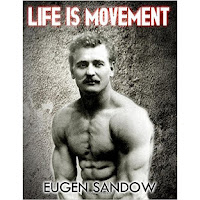We all have twenty-four hours a day. That comes out to 1,440 minutes a day. Over the course of a week, that equals 168 hours. If you work forty hours per week, and sleep 56 hours per week ( eight hours a night), you will still have 72 hours left over. Naturally, your work - or school- schedule may vary, and perhaps you require more than eight hours of sleep per night. You can still arrange your time so that one or two hours each week can be used to build your body. In other words, you can still find time to train.
Depending on your goals, you can easily find a couple hours during the course of a week to exercise. If your goal is simply "to get in shape," you will require less time than someone who wants to maximize his/her potential. If you want to build maximum size and strength, you will require more in the way of time to reach your goals. But, even if you want to get as big and strong as possible, you do not need endless hours in the gym to build strength. Great strength can be developed by doing two or three heavy workouts per week. You will still be able to hold a job, go to school, and lead an active life. In other words, you do not have to live in the gym, despite what you may read in the various muscle magazines.
If you are determined to get stronger, then you find a way to make time for your training. Determination to get bigger, stronger, and healthier will help you achieve your goals. One of the best ways to build determination is to force yourself to do things you would rather not do. If this means waking up an hour earlier in the morning in order to complete a workout, then so be it. Every day you must do things you don't want to do, if for no other reason than the fact that doing things you don't want to will strengthen your character.
Don't be a procrastinator. Don't wait until tomorrow. One of my favorite lines from the movie Rocky III was when Apollo yelled at Rocky: "There is no tomorrow!" Think about that the next time you feel like putting off your workout. When it comes to finding time to train, there is today. Now. Don't put it off. As I am writing this, there are less than forty days left in the year. In a little over a month, we will be ringing in the year 2020. How will you spend the last month of this year? Will you get a jump on the new year and push yourself to work hard towards achieving your goals? Just think, if you've been planning on starting a strength-training program, you can get a head start on the New Year Resolutioners by getting started right now. You will be richly rewarded for the effort to you put forth. Let the weak-minded procrastinators wait until January 1st. You will be ahead of the game, in more ways than one. The best part is that you don't need a lot of time. Twenty or thirty minutes, several times a week, is a good way to begin. Whether you train at home or in a commercial gym is not important. Just get going, and continue with your routine.
You will fail only if you don't start. It may seem trite to say that you get out of lifting what you put into it. Don't let anything interfere with your ambition. If you put forth the effort, you will derive the benefits of strength and health. Last year, I wrote an article titled "Strength and Health Must Be Earned." And while nobody ever said that it would be easy, progressive strength-training will be the best investment you will ever make.
This is the time of year when it is customary to take inventory of ourselves. What have we accomplished over the past year? If you are currently engaged in a weight-training regimen, then you should plan now to continue with what you are doing. What if you are not satisfied with the progress you've made? Or what if you have stopped training for one reason or another? Then you must determine what mistakes you have made, and formulate a plan to go forward. Set a goal, devise a plan to achieve that goal, and then don't allow anything to deter you from achieving what you want.
Don't make excuses, and, especially, do not claim that there isn't time. One of my favorite quotes came from a High School yearbook. The Principal's message to the graduating class ended with these words: "Time is the only thing of real value that you possess. Don't waste it!" Don't wait for tomorrow. It's time to lift.

